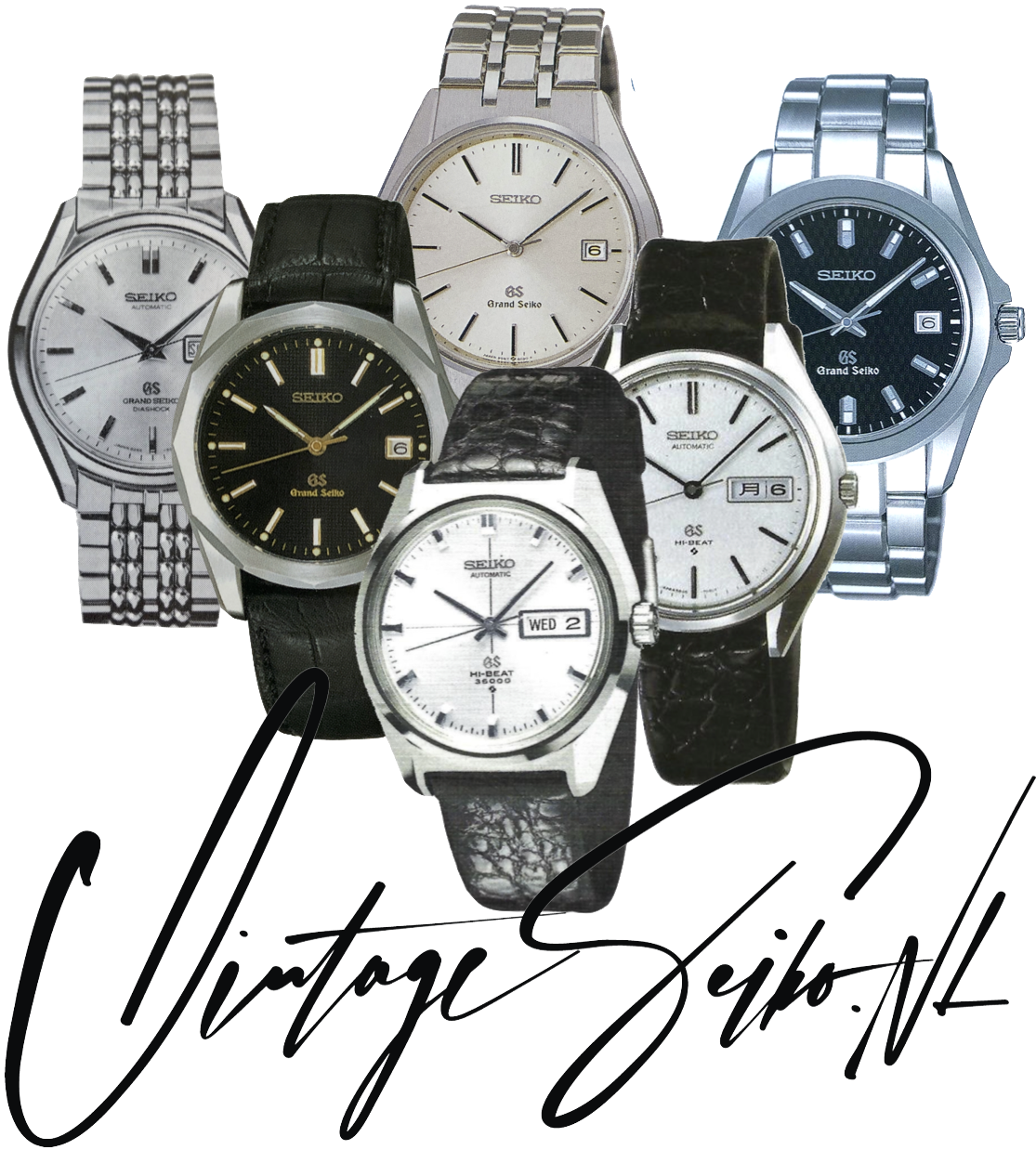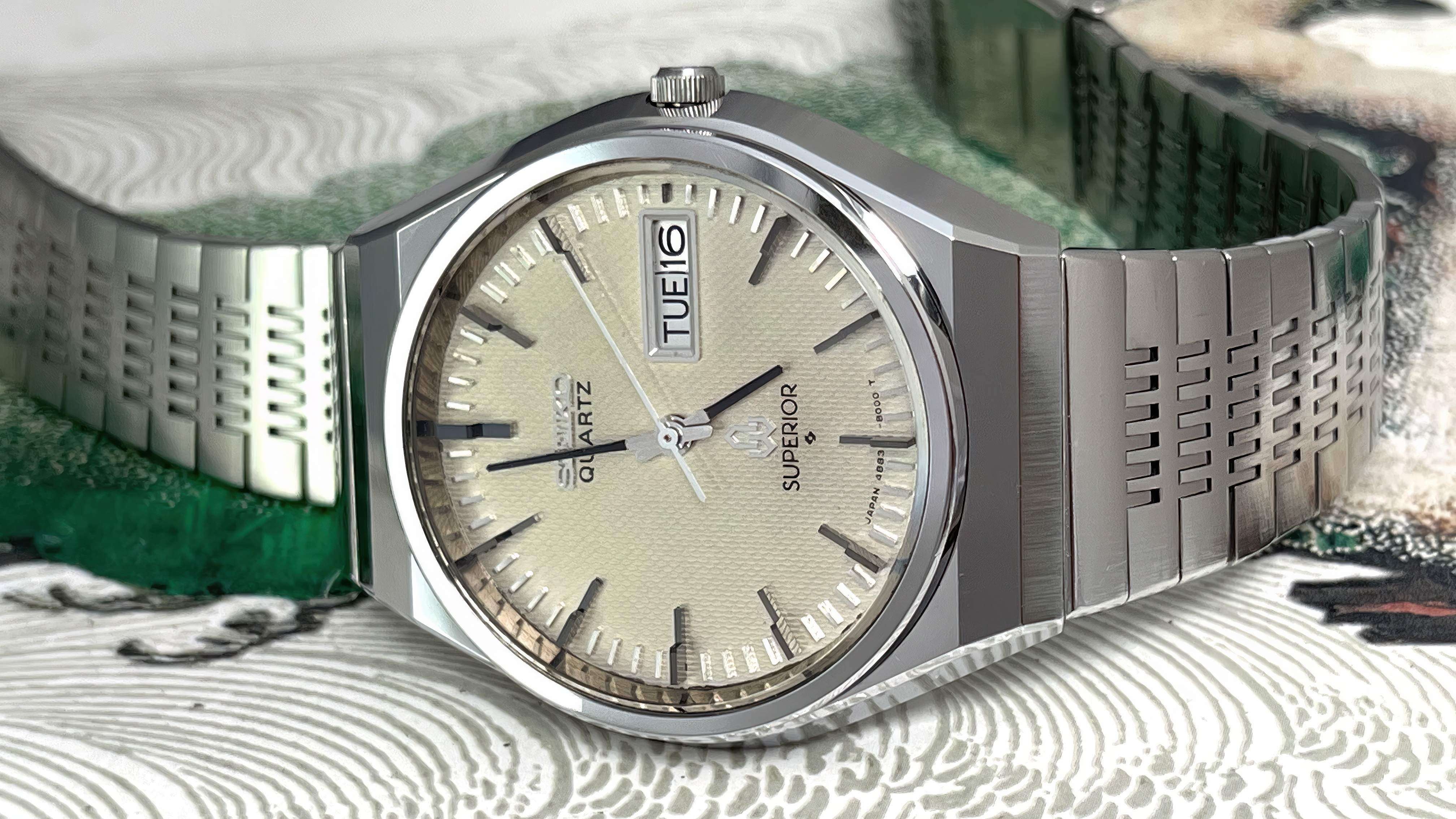
The quartz crisis begins
A serious collector will have dealings with the the early quartzes of the seventies, like the 38 caliber movement. These movements were later divided in the Seiko Superior, SQ, QT, QR and QZ quartzes. At the start of the decade quartzes were finding there place, and quartz was just that.. Quartz. And on the dial it was made evident, Quartz before Superior, Only later did Seiko decide to differentiate calibers and quality from the original 3800 series. Of course, even at an early point in time there already was the usual differentiation between day-date and calendar only. Caliber 3803 would signify daydate, 3802 calendar only.
Dit bericht bekijken op Instagram
Seiko Quartz 3803-7020 (For sale)
Een bericht gedeeld door Collectionist on vintage Seiko (@collectionist0) op 15 Feb 2020 om 6:19 (PST)
All of these early quartzes were JDM (Japanese Domestic Market) watches made around 1971-75, while the export models were mostly labelled SQ 3003 (QT), SQ 2002 (QR) and SQ 4004 (QZ). The highest quality and the most expensive of these 38's - apart from the early 380X series - were the Superior, SQ & QT with tighter specifications - as compared to QR's 20. Only then came (much later in time as well) the QZ. But remember, at this time there were no cheap quartzes so even the QZ was more expensive than the average mechanical watch.
After 1975 the 38QR did not turn up again in any other series and died out as such; it is depicted lastly in the catalogue of 1975 - right next to the identically priced 08QZW/08QZC - that would be calibers such as 0842/0843. The Superior of course got into its own with caliber 4883, dropping the Quartz label on the dial. It is evident then that the 08's are the descendants of the 38QR, just like the 48 calibers.
What a conclusion to see these presumably simple early quartzes elevated.. Of course they already looked the part. We are not done here however, and it does not get any easier with the 38QT; this caliber is depicted right next to the 48GQW (and more expensive), it evolves after 1975 into the other 08 caliber - the 08KQW King Quartz series - and, for a year or so, into the elusive 08QTC (C for Calender)! That would be respectively the King Quartz 0852/0853 and the Quartz QT 0823. The 38QZ finally is introduced in 1975 in the 09 series with a 15/20s specification.
In hindsight, there never was a model year where all these designations existed at the same time, but it is evident that some SQ's are better and more expensive than both the QT and QR. The cheapest QR of course was more expensive than the QZ at introduction but this compares 1971 against 1975 where there probably has been significant price erosion for quartz watches. However, with more or less the same specifications and a four year difference, the QR would have had the higher market positioning - just below QT of course.
Some stats are printed below, between brackets the seconds per month:
1974, 08 series, 0822 (15), 0823 (15), 0841 (15), 0842 (15), 0843 (10), 0852 (10) and 0853 King Quartz (10)
Superior
Dit bericht bekijken op Instagram
Seiko Superior 3883-7000 - not just any grail... (Reserved)
Een bericht gedeeld door Collectionist on vintage Seiko (@collectionist0) op 29 Jan 2020 om 6:38 (PST)
The Superior line, with multiple calibers later on, launched in 1974 with the 3883 caliber. Eventually it featured a 9980 movement with an accuracy rating of 5 seconds per year, among the best Seiko has ever produced. The 4883 Superior showen below however is no slouch either - of course a 2500 euro watch really had to bring it! An accuracy rating of 1 second per month was achieved in this 1976 edition...
Seiko recently came clean with accuracy ratings for most of its high accuracy quartzes. For decades it actually had been a secret, as most were actually much more accurate than advertised. It fits Seiko's advertising philosophy to be modest while delivering the ultimate watch.
Dit bericht bekijken op InstagramEen bericht gedeeld door Collectionist on vintage Seiko (@collectionist0) op
From Seiko V.F.A to Superior
Seiko's quartz V.F.A. (Very Fine Adjusted) and the Superior line were the leading Quartzes of the Seventies. In 1971 calibers 38SQW V.F.A. (or 3823) and 39SQW V.F.A. (or 3922/23) were the true heirs of the Quartz Astron which debuted in 1969 (these were only produced in 100 pieces costing JPY 450,000).
Right after the limited run of the Astron Quartz Seiko ran development in two parallel competing streams, with the Suwa factory initially producing the 35SQW series and the Daini factory the 36SQW series. However, these developments turned out to be a very expensive and complicated production, so the 35SQW was soon replaced by the 38SQW series running at 5s per month. Daini replaced the 39 series with 36SQW.
Pricing was insane initially, at the introduction in the catalogue of 1974 the 18 karat gold 38SQW V.F.A. would bleed you dry for 1.3 million JPY or the price of a small affordable apartment. It would be about 34.000 dollars nowadays. But then, Seiko did not spare any expense in the design of the watch. It has the individually assembled minute markers, which later became famous on any Superior. It also uses the very thin (probably lacquered) black pencil hands that were common on the high end Seikos of the period.
Fortunately, the stainless steel 38SQW became available to the general public at a comparatively affordable price of just 150000 JPY or 4000 dollars. Later on – somewhere in 1976 - the 3823 was to be replaced by the 3883 and 4883 calibers, these demanded (again) the premium price at almost double the value at 220.000 JPY. (While the 3823 was reduced to a much more affordable JPY 135,000.) This meant that the 3823 achievement was beaten price wise and spec wise at a 2s per month rating. Sadly this got beaten again after just a year at the top by the 1s per month 4883 Superior.
For this superior caliber watch Seiko of course did not just produce one model, in the line up one could buy the Hardened Gold Plated -8001 and 8100 on leather or the HSS -8001 and -8100 on bracelet. These watches were different in that the 8001 was 2mm wider and thicker, 38x42x11mm, versus the 8100's 36x42x10mm. That meant that the -8001 crystal was also bigger at 31mm and the dial larger. There are other les obvious differences to be seen, such as the way the bracelet attaches to the case (tapering out) and the thicker end link which on a Superior always has to be flush with the case.
Twin Quartz 9980/9983
However, as the fanatics at Seiko still sought room for improvement, the Seiko 1978 JDM catalogue debuted the twin quartz caliber - symbolized by the double honeycomb, proudly showing this embossed on the crown and applied on the dial. And if that was not enough, there were (eventually) at least three different design technologies behind these models. The rationale was that while quartz based watches are extremely accurate compared to mechanical watches, they are still not perfect, one of the main reasons for the inaccuracy in a quartz model is that temperature fluctuations change the oscillation of the quartz crystal to vary ever so slightly. This change in oscillation will cause the slight drift in timing. To compensate for these changes quartz watches will employ some kind of temperature compensation.
In all five different superior and non-superior calibre series were introduced in less than two and a half years. The Superior 9980 and -83 series, first released in August 1978, the 92 Grand and King Quartz series released in December 1978, closely followed by the 97 King Quartz series released in October 1979 (9722A, 9723A).
Just under a year later the 96 Superior and Quartz series were released in September 1980 as caliber 9641A and 9642, the latter in the inconspicuous Seiko Quartz - a true wolf in sheep’s clothes. Hot on its heels was the 94 Superior (9481/83), but also the Grand, King and Quartz series were released in November of 1980 (respectively 9461, 9443 and 9441). And yes, there was also the maverick Lassale 9442.
The Superior line however, caliber 9983, was a movement with an accuracy rating of 5 seconds per year, among the best Seiko has ever produced. At that time, the Grand Quartz line from Suwa also benefits from this twin quartz innovation with the twin 9943 and the 9940 Grand Quartz caliber - retiring the caliber 4843 (likewise the 4883) that had just been selling for two years (1976-1978). The most expensive models however, still are and always were in the Superior line. With a price tag of 235,000 JPY for the 9983 you would be paying about 4700 dollars nowadays.


Seiko Superior 4883-8100 - Full set in NOS condition (Sold)
€ 1625.00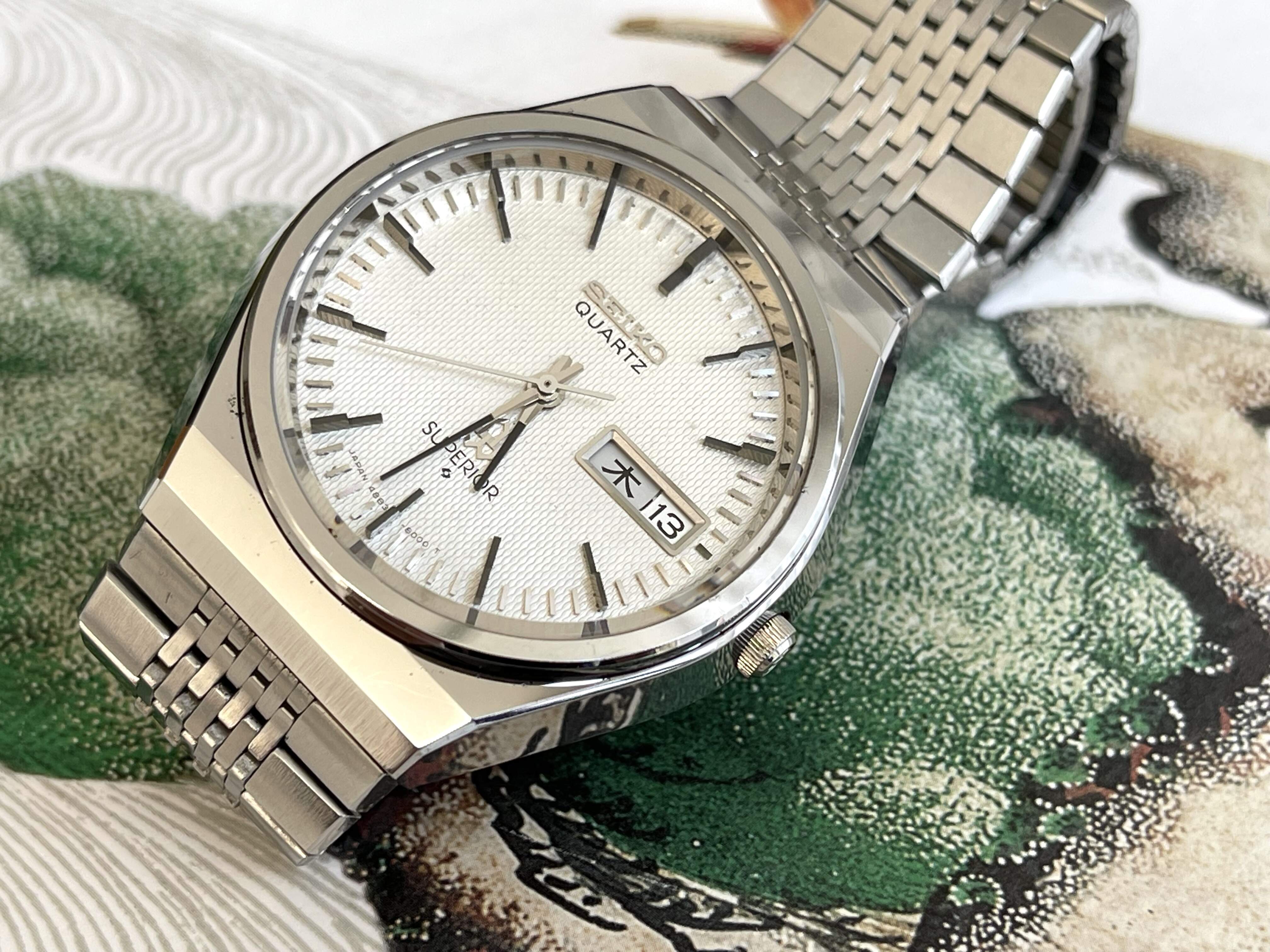
Seiko Superior 4883-8001 (Sold)
€ 1375.00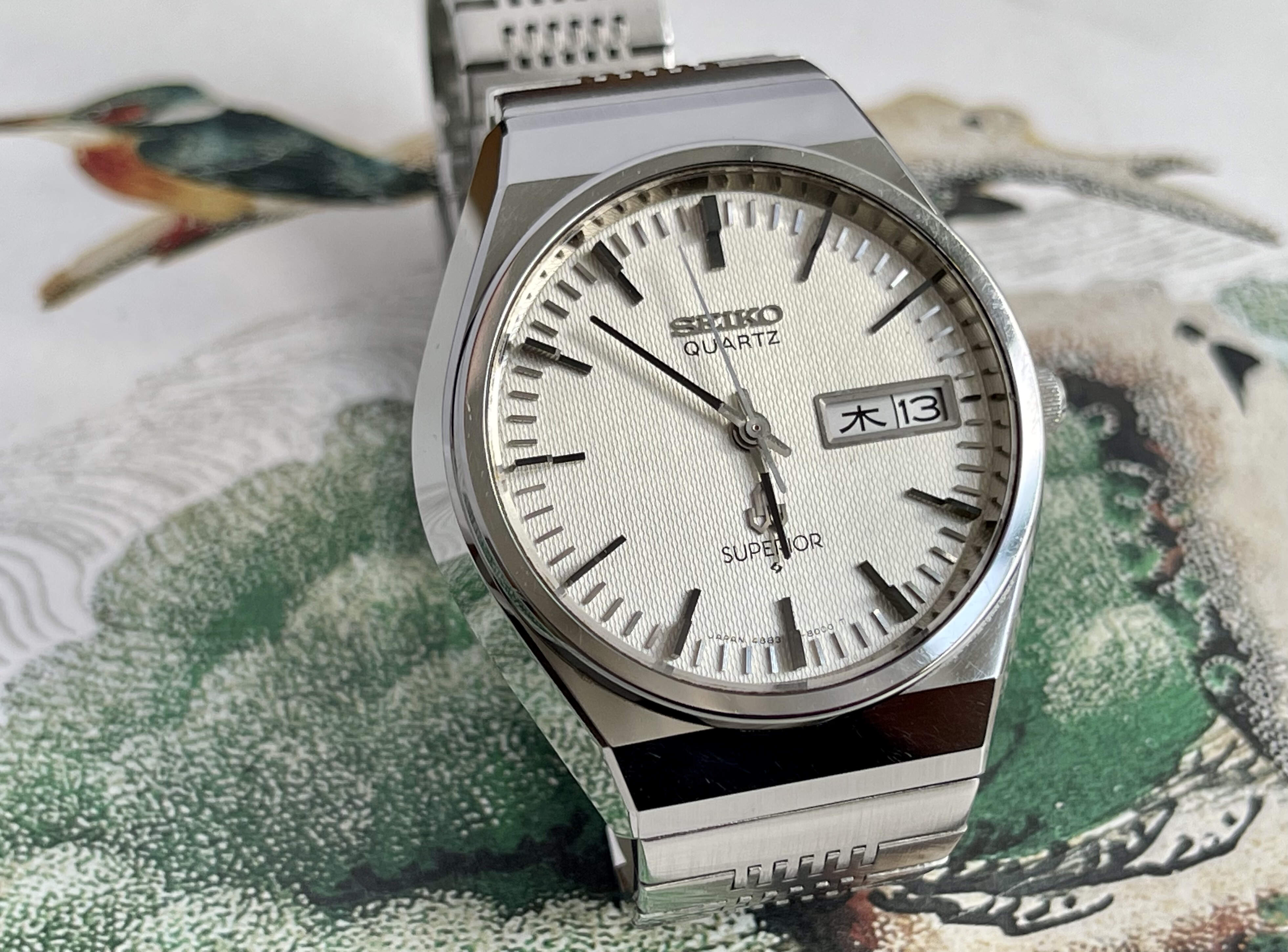
Seiko Superior 4883-8100 (Sold)
€ 1425.00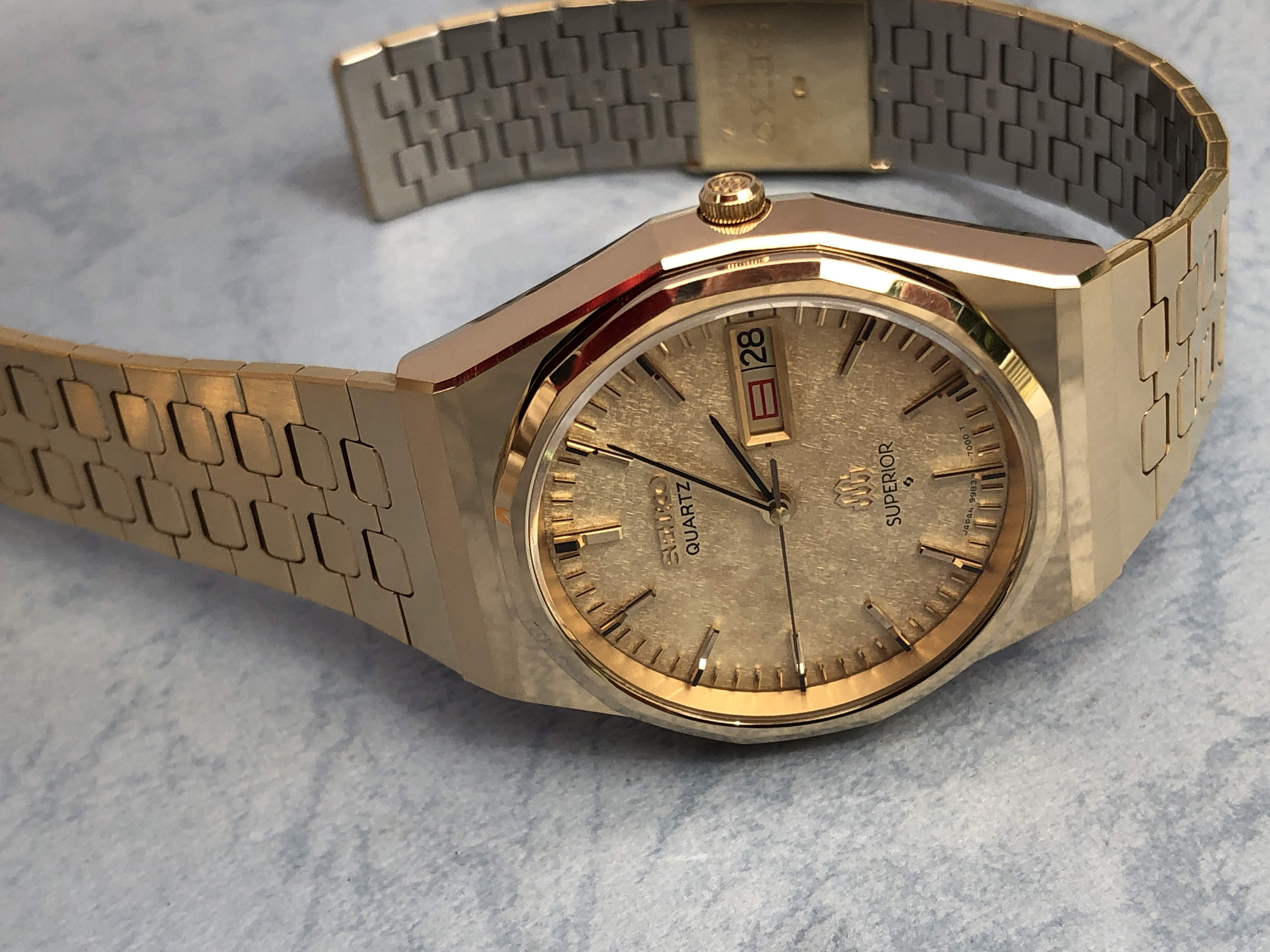
Seiko Superior 9983-7000 QGA804 (Sold)
€ 1875.00
Seiko Superior 9481-5000 QEX010 (Sold)
€ 925.00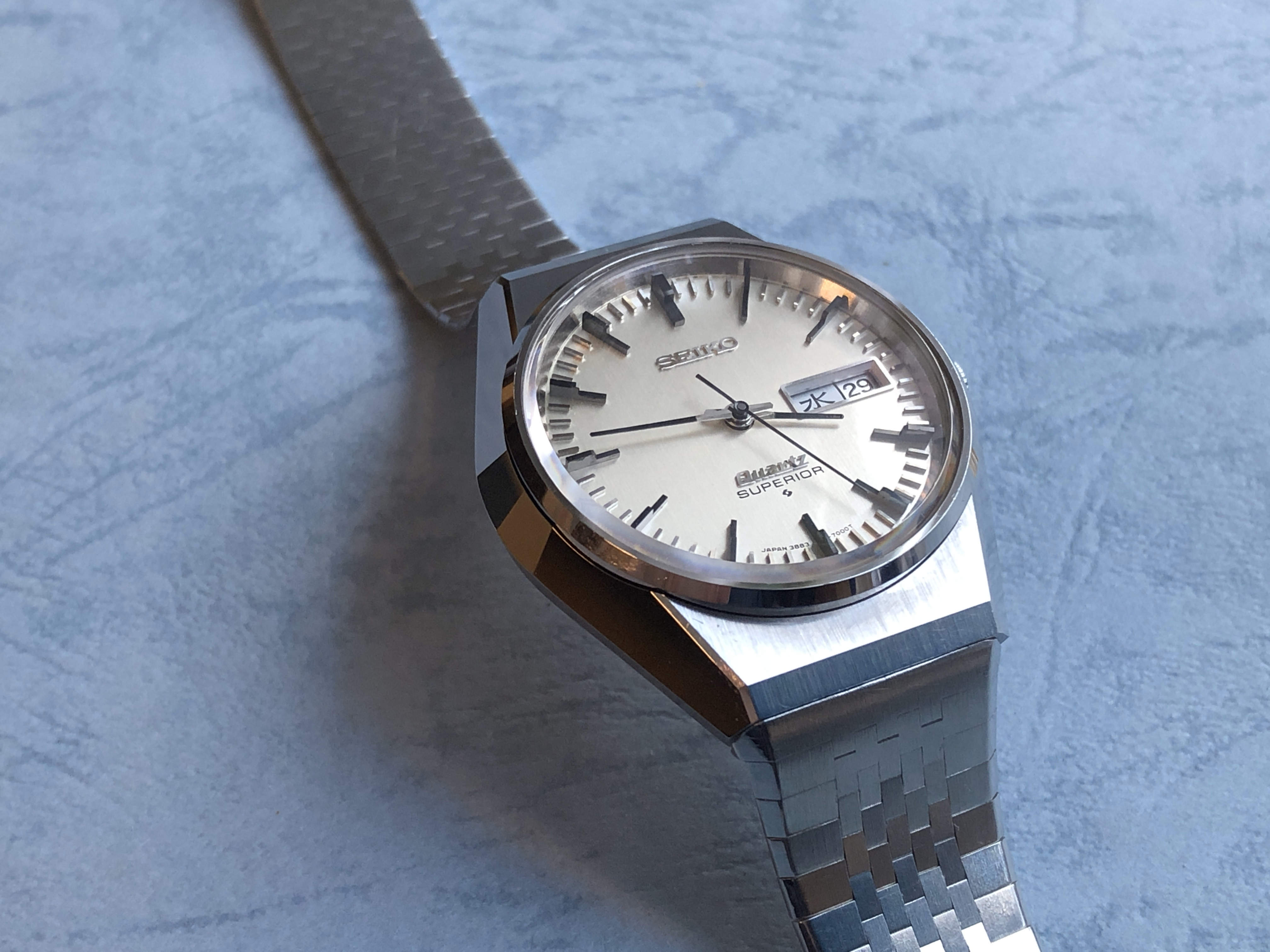
Seiko Superior 3883-7000 (Sold)
€ 1275.00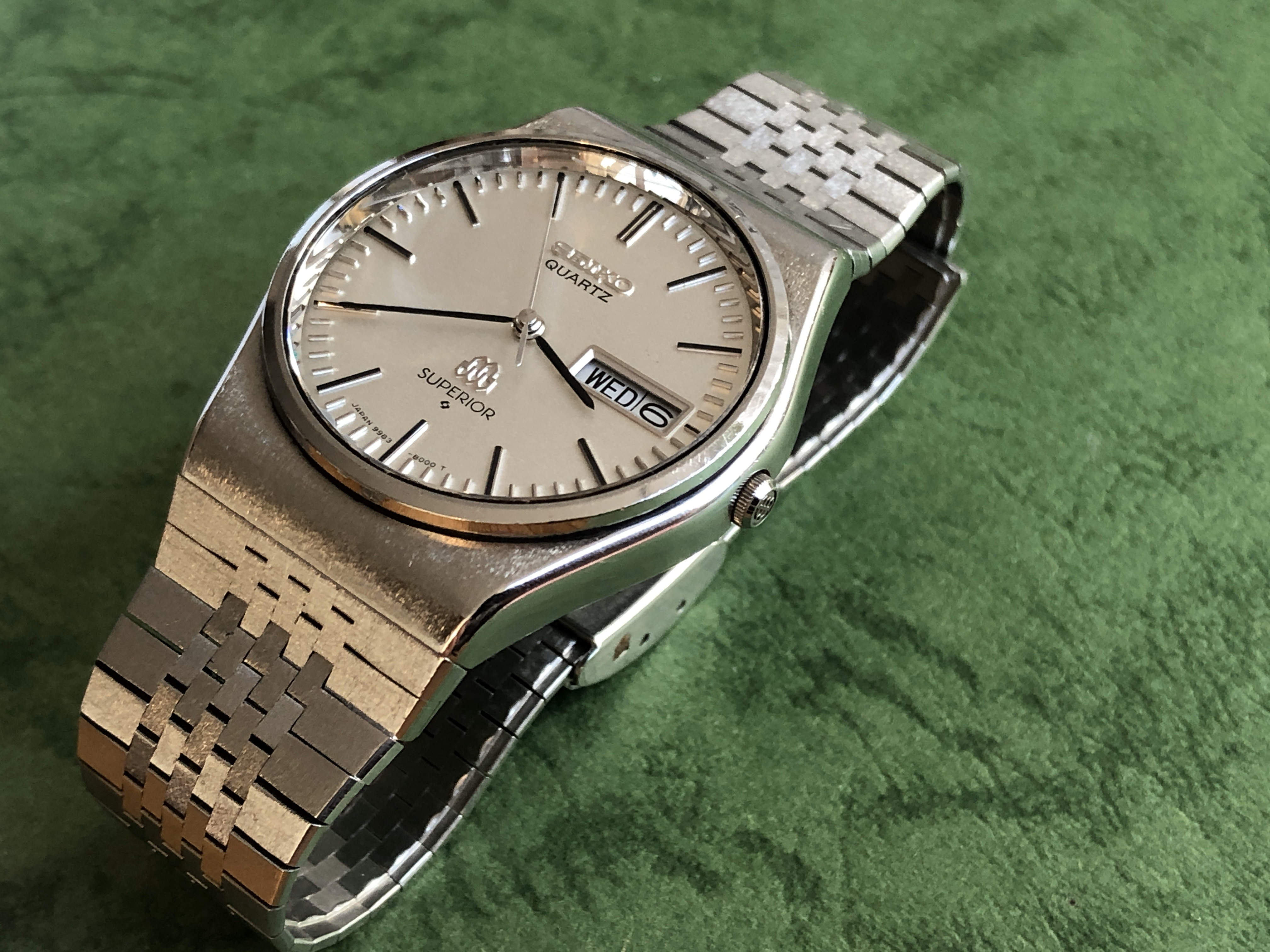
Seiko Superior 9983-8000 (Sold)
€ 935.00
